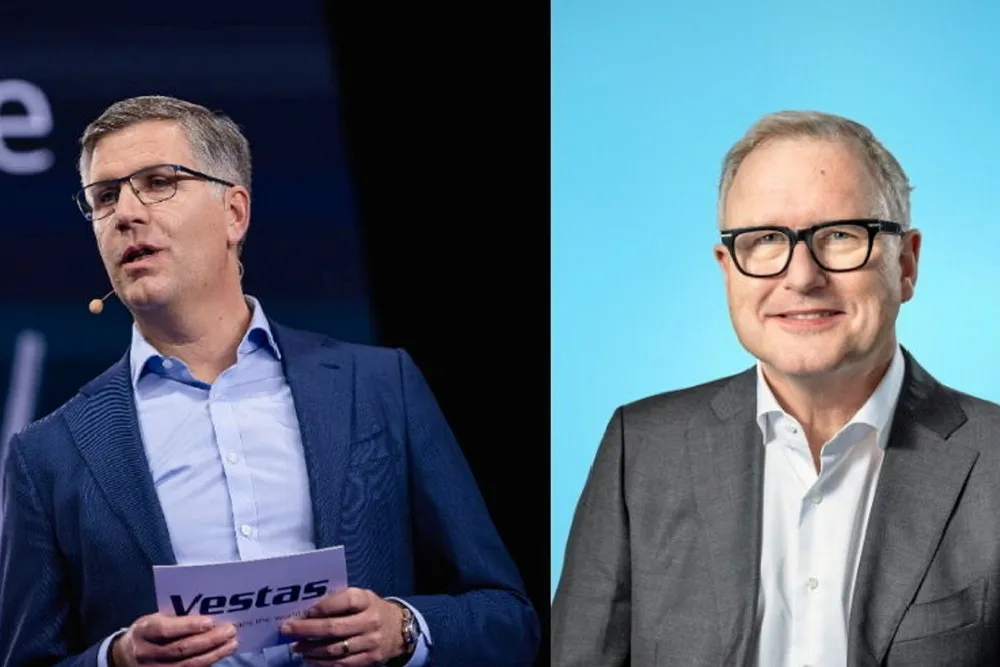Vestas and Van Oord: 'Scaling up offshore wind is a supersized challenge for vessels and ports'
OPINION | Vessel operators will be reluctant to invest in new-builds while uncertainty hangs over scale of components, write Damien Lhors and Arnoud Kuis

The global wind industry is in the midst of a historic expansion to meet the ambitious targets set by the Paris Agreement and address the escalating energy crisis. To achieve these goals, a threefold increase in renewable energy capacity is imperative by 2030, as highlighted by the International Energy Agency.
Challenges posed by rising energy prices and geopolitical uncertainties underscore the imperative for robust energy infrastructure.
In the dynamic landscape of renewable energy, offshore wind farms emerge as beacons of hope for a cleaner and more sustainable future. As the demand for cleaner energy sources continues to rise, the offshore wind industry is gearing up to meet these challenges head-on.
The success story of wind energy in Europe unfolds as technology improves and scales up, resulting in a 48% drop in the global weighted-average levelised cost of energy (LCOE) for offshore wind between 2010 and 2020, supported by favorable financial terms. However, despite impressive innovations, the wind energy sector faces challenges in its current phase of expansion.
The rapid development of larger turbines, dubbed the 'turbine arms race,' exemplifies one such challenge. Installing these turbines poses ongoing difficulties for marine contractors, requiring constant adaptations to equipment, including ships, cranes, and ports. These modifications lead to significant capital-intensive investments and diminishing returns (ROI) for contractors.
The historical pursuit of larger turbines to enhance energy output and efficiency is evolving in the face of a new reality. While larger turbines have historically lowered LCOE, an independent DNV study suggests that we may be reaching a breaking point where further size increases no longer translate to cheaper energy.
In essence, the assumption that continuously building larger turbines will indefinitely reduce energy costs is now very much in question. This underscores the need to reassess strategies for sustainable and economically viable wind energy solutions in the face of changing dynamics and potential diminishing returns.
Big turbines need big boats
Every time, we introduce a new turbine platform, we have to rethink the entire value chain. We must develop new processes and tools and train and educate our people to use them in a safe manner. We need new components, new moulds, new trucks, cranes, and vessels for transportation from manufacturing sites to installation locations. These vessels must be specifically designed to accommodate the size and weight of the turbine components, requiring significant investments in the development and modification of maritime infrastructure.
There is already a visible lack of vessels at the world market to cater for the installation of upcoming projects around the world. And as long as vessel providers cannot be sure what size of turbine components they need to carry in the future, they are very reluctant to invest in building new vessels.
And then there is ports. Ports are key players in the turbine transportation game. Larger vessels require larger harbours with enhanced handling capacities to accommodate the unloading, storage, and subsequent transportation of oversized components – not only the wind turbines but also the foundations. Insufficient port infrastructure can lead to delays and extra costs start piling up – and turbines are not being installed in time.
Europe is committed to realising a secure, affordable, and sustainable energy transition. Recent events, including spikes in energy prices and supply disruptions, underscore the importance of resilient energy systems. Initiatives like the European Commission's Just Energy Transition Fund and support measures from e.g. the Nordic countries highlight the commitment and broader societal impact of energy decisions.
Long-term planning holds paramount importance for the offshore wind sector and governments alike. A sustainable and logical growth path is essential to avoid consequences such as vacant production facilities and bankruptcies. To achieve this, governments should establish guidelines that not only mitigate uncertainties but also enhance sustainability by fostering healthy competition and innovation within the sector, while avoiding speculation on technology in auctions.
By laying the foundation for proactive and comprehensive measures, European policymakers can ensure the continued success of the energy transition, contributing to the region's energy security, economic stability, and environmental sustainability.
We propose that auction mechanisms should require a binding technology commitment with certification plan from suppliers, which would cover not only wind turbine generators but also significant capital expenditure items like foundations and vessels.
Maximise efficiency, reduce speculation
This strategic shift away from non-binding technology offers can mitigate uncertainty and create a more stable environment for both the market and the supply chain. In doing so, it bolsters the overall chances of success for offshore wind projects by enhancing business case certainty, bankability, and project viability. This proposal is geared towards maximising efficiency and reducing speculation within the industry.
Governments can play a key role by establishing guidelines and organising smarter tenders to ensure predictable timelines, fostering competition and innovation. Initiatives like the European Wind Charter show promise but caution against incentivising technology speculation without proper supplier backing.
A temporary hold on larger turbines promotes inclusivity and collaboration within the industry, while at the same time not negatively impacting cost of energy levels as the earlier mentioned DNV report indicated. Backing products with a robust supply chain and infrastructure is critical, emphasising a conservative approach to product development and longer life cycles for scalability and market resilience.
The clean energy transition is within reach, and by uniting as an industry, we can ensure a clean and green future for the next generation.